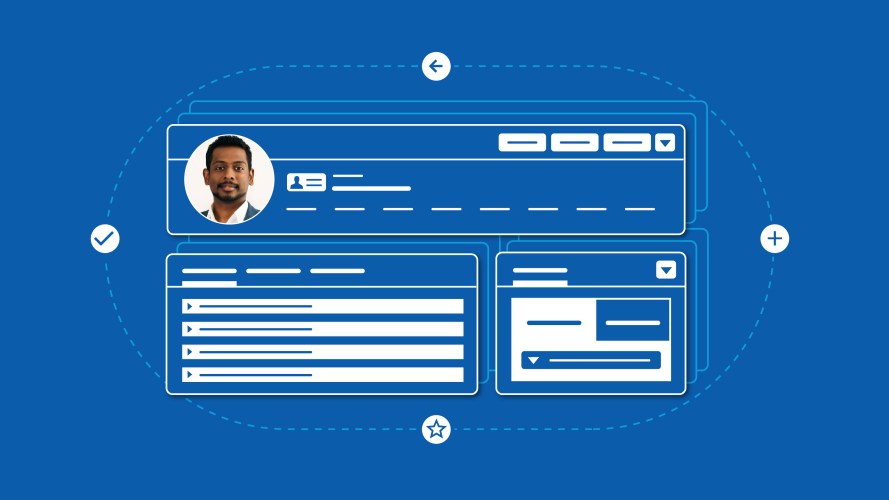A ‘Cookie-Cutter’ Design May Be What Your Users Need

Having a universal template for your Salesforce record pages can improve reliability and trust – here's how.

Kate Hughes
When your users build too many custom layouts for Salesforce record pages, it can cause confusion and hinder productivity. One 10X-certified Trailblazer faced that challenge and solved it by introducing a simple, repeatable design pattern – and the results were transformational.
Just because a design is “basic” doesn’t mean it’s not the right solution. “Cookie-cutter can be a useful thing,” said Prag Ravichandran Kamalaveni, Founder and CEO of Skilled Cohort.
Why design patterns improve productivity
For more than 20 years, a public sector organization created team-specific versions of Salesforce Lightning Experience record pages. Too many layouts caused confusion and led people to keep data in their own spreadsheets instead of populating Sales Cloud via record pages.
Prag brought his client back to UX basics. Together, they implemented a universal template for Lightning record pages with standard and custom objects. Having repeatable design pattern approach allowed users to navigate pages more easily and enabled them to scrap their spreadsheets.
“People came back to Sales Cloud to populate information,” Prag said. “They started feeling more confident that they could do what they needed to do and get things done quickly.”
At last, everyone could benefit from a single source of truth.
Familiar design patterns encourage habit-building
“Good design builds on muscle memory and that’s how it can become a habit,” said Prag, who worked on this project back when he was at CloudKettle, a consultancy that helps organizations improve revenue operations.
His design strategy factored in that everyone develops mental shortcuts as they go. Processes are easier when they’re familiar. Therefore, familiar components on record pages can boost efficiency and let users take action without friction.
Prag made one template with two columns. He gave the design pattern elements the same look, placement, and purpose in every instance. A business-critical reason to recreate the wheel didn’t exist. If anything, it was the opposite.
Users needed to be able to rely on an intuitive user experience. They needed to trust what they know about one pattern to inform whatever page they found themselves on.
“There’s a single reason this worked,” he said. “The templatized record pages were all possible because of the Salesforce Lightning Design System (SLDS).”
A design system enforces consistency
There are big benefits to design systems. Prag relied on SLDS for the resources to create record pages consistent with Salesforce’s user experience principles, design language, and best practices. “Built-in, component-based architecture allowed us to segregate the grouped information into a universal template for record pages,” he said.
After all, even a small design choice can create a struggle for users. If an element is in a new place, it can cause mental drain, drag, and eventually resignation. Having to relearn an experience can slow down a user’s workflow.
The new design patterns were made at the macrointeraction level and the microinteraction level. Prag ensured that bigger tasks (such as login) were as uniform as smaller ones (such as form submission).
Templates speed up workflow
Today, the team’s information is centralized in Sales Cloud. Users feel comfortable with familiar design patterns. Work is easier and the benefits of sharing information are significant. The former deviations slowed work down and increased the burden on the Salesforce admin. Now, no one navigates different pages in different ways.
This type of transformation is always possible. Prag saw it hundreds of times in his thirteen years specializing in Salesforce. The key is for organizations to keep assessing their implementation to reduce tech debt and design debt.
What worked before may not be working now. The beauty of design is that it’s an ongoing conversation. And sometimes consistent design patterns are just what you need to get your team back on track.
Empower your sales teams
Maximize productivity, get valuable insights, and streamline processes to grow with you. Learn more about Sales Cloud.






























